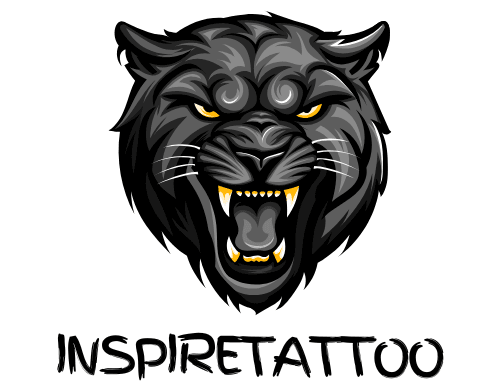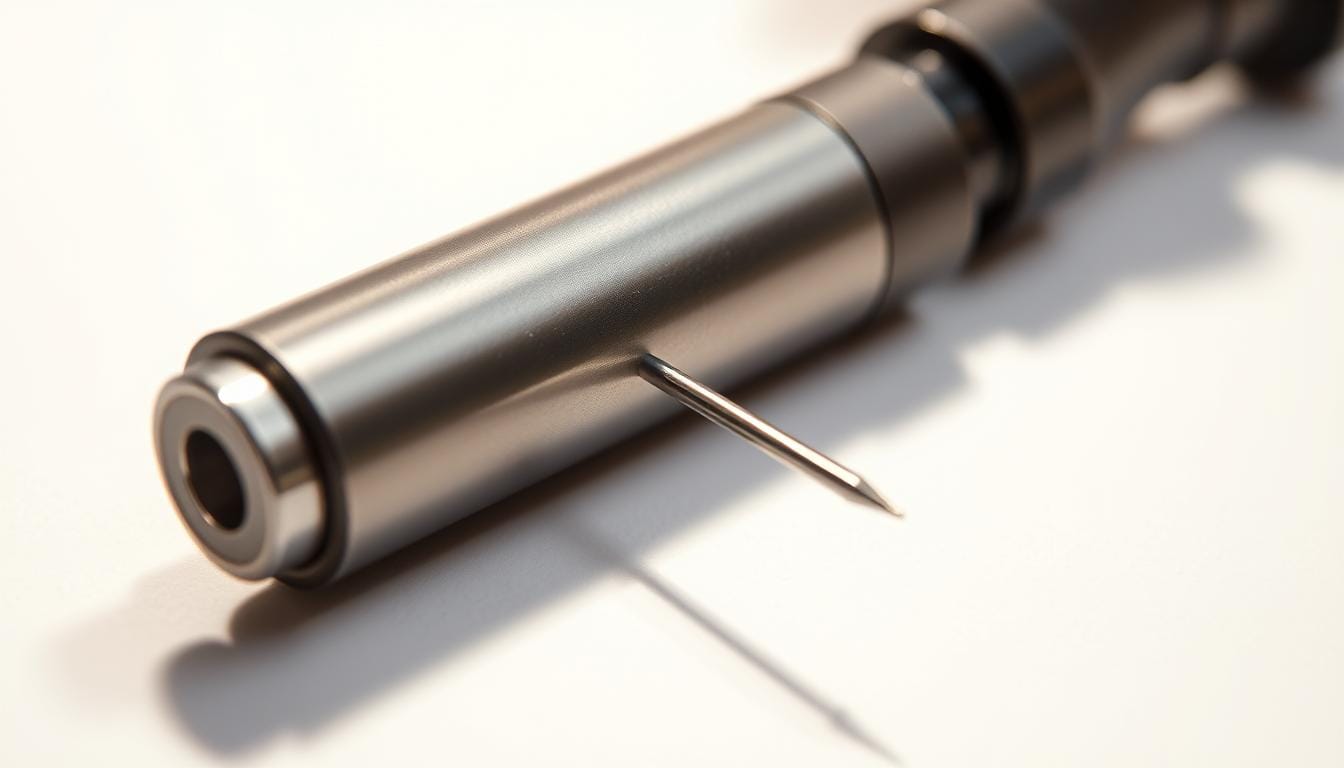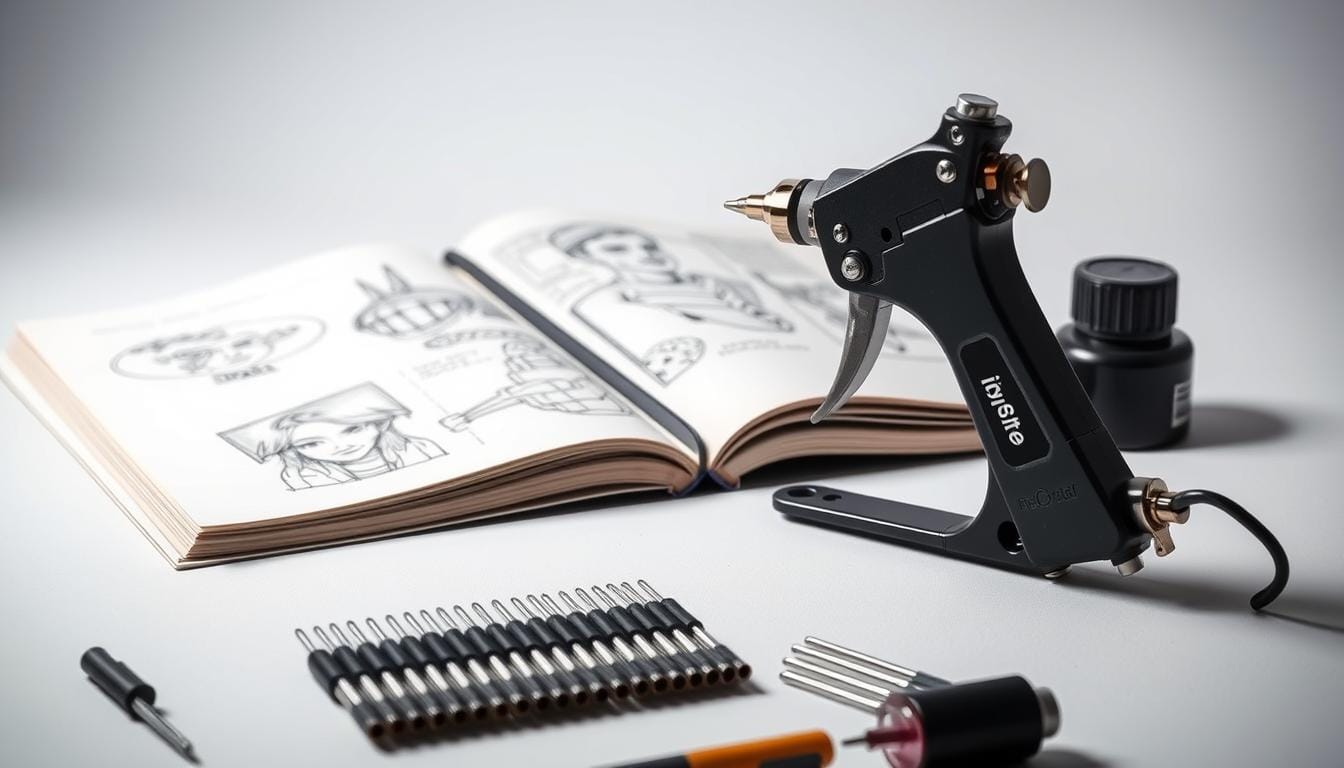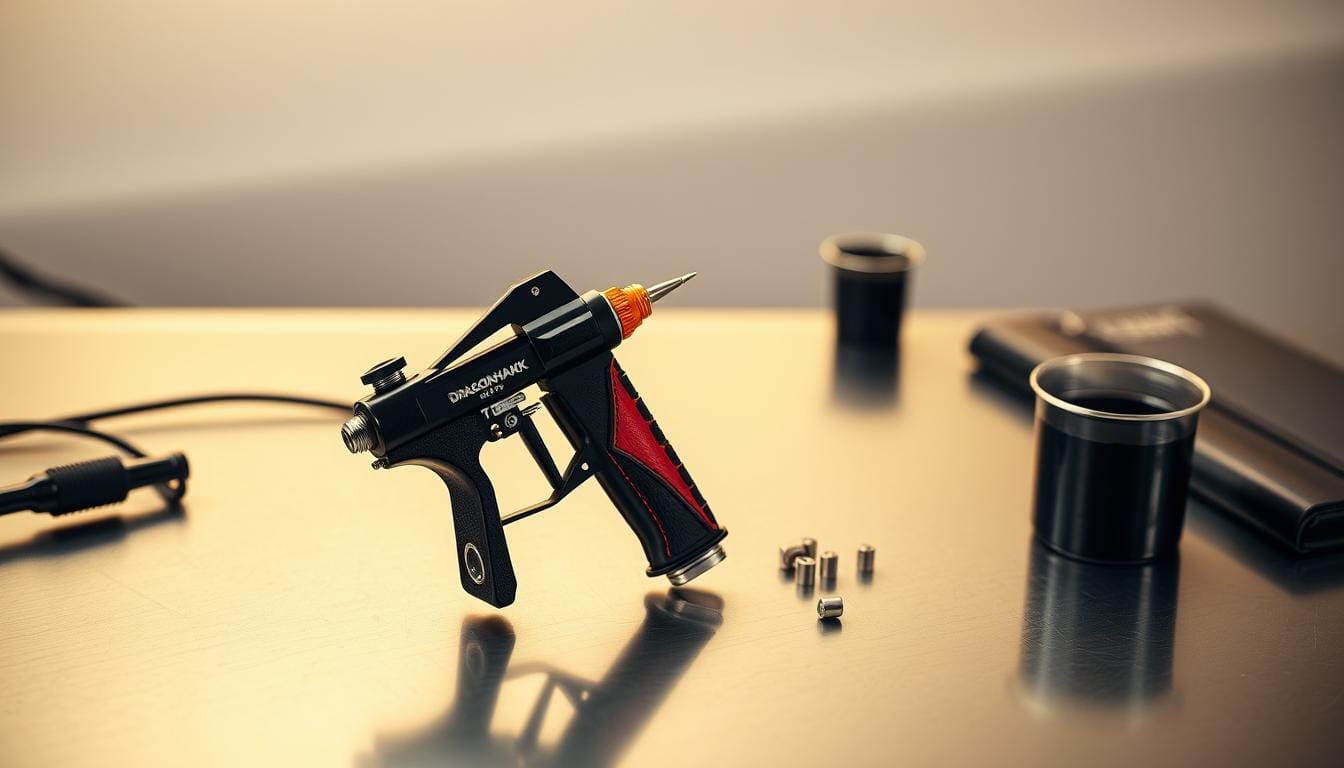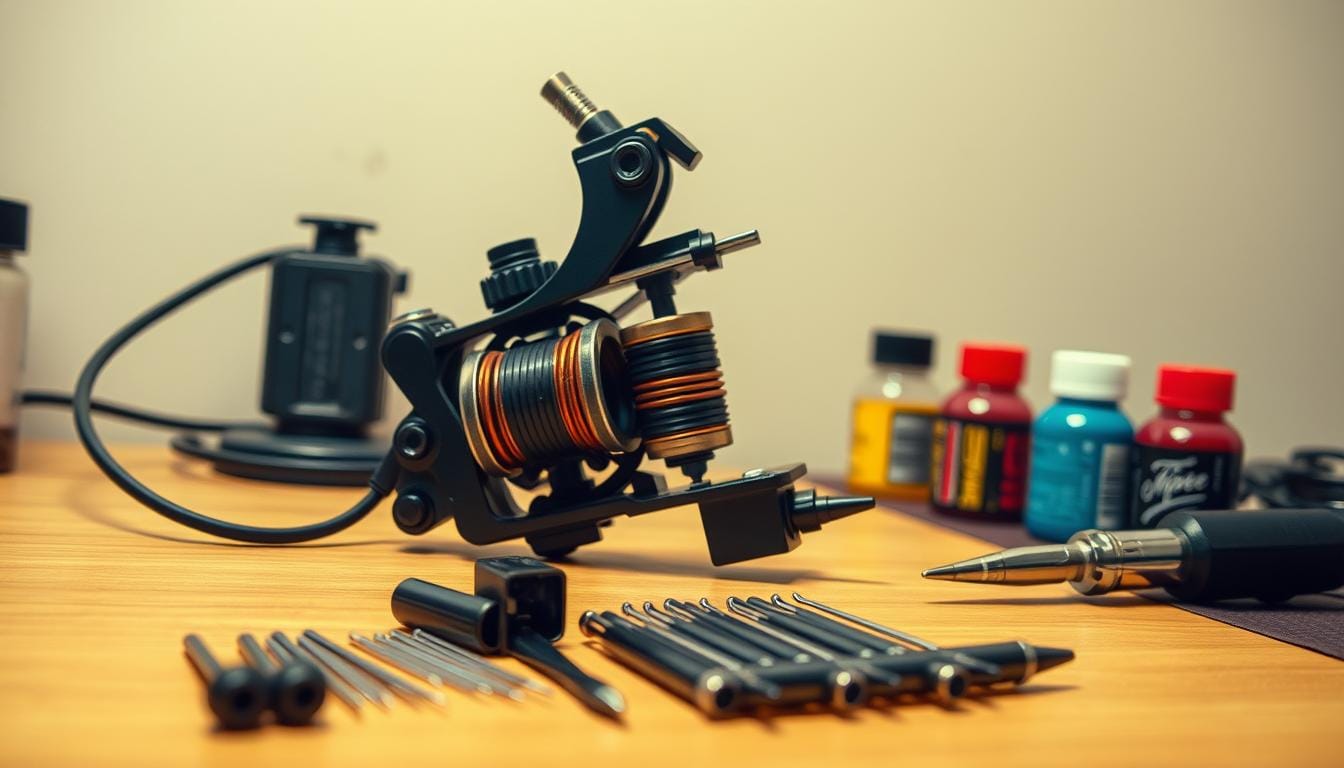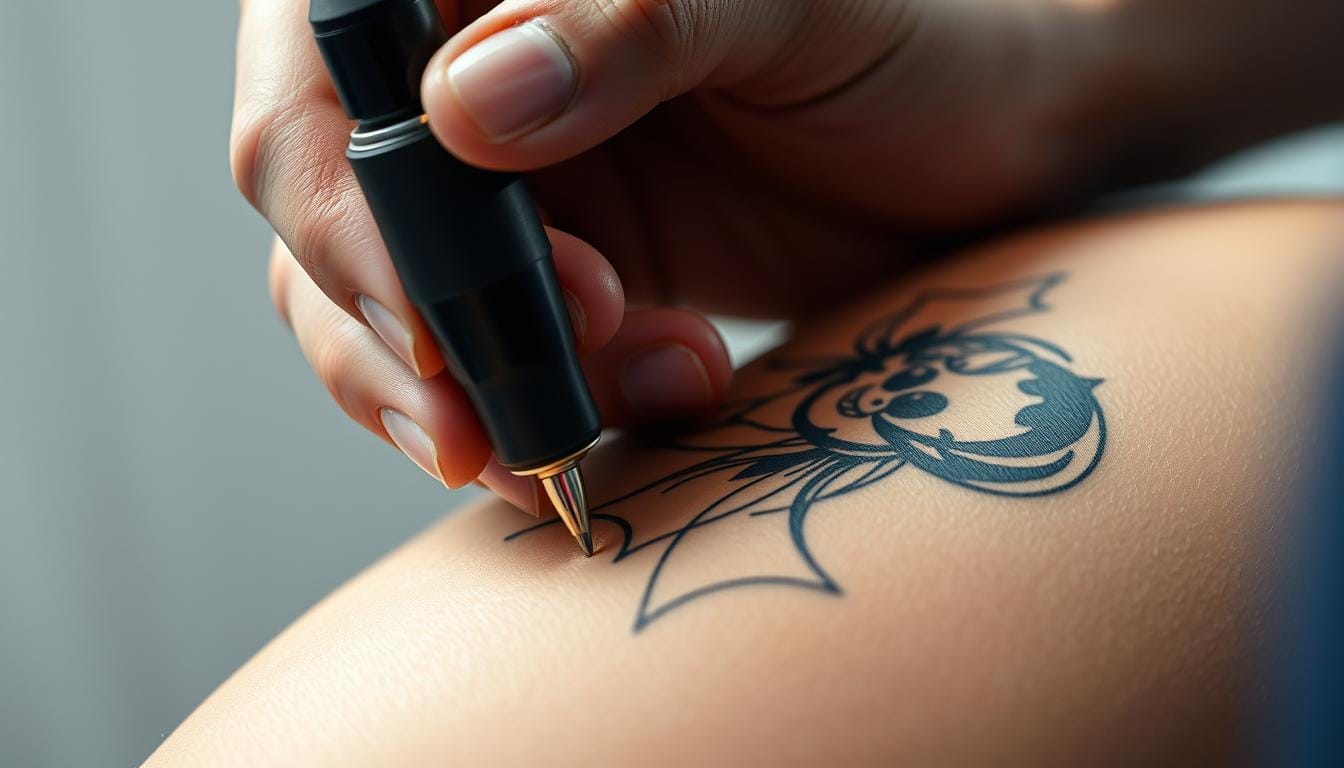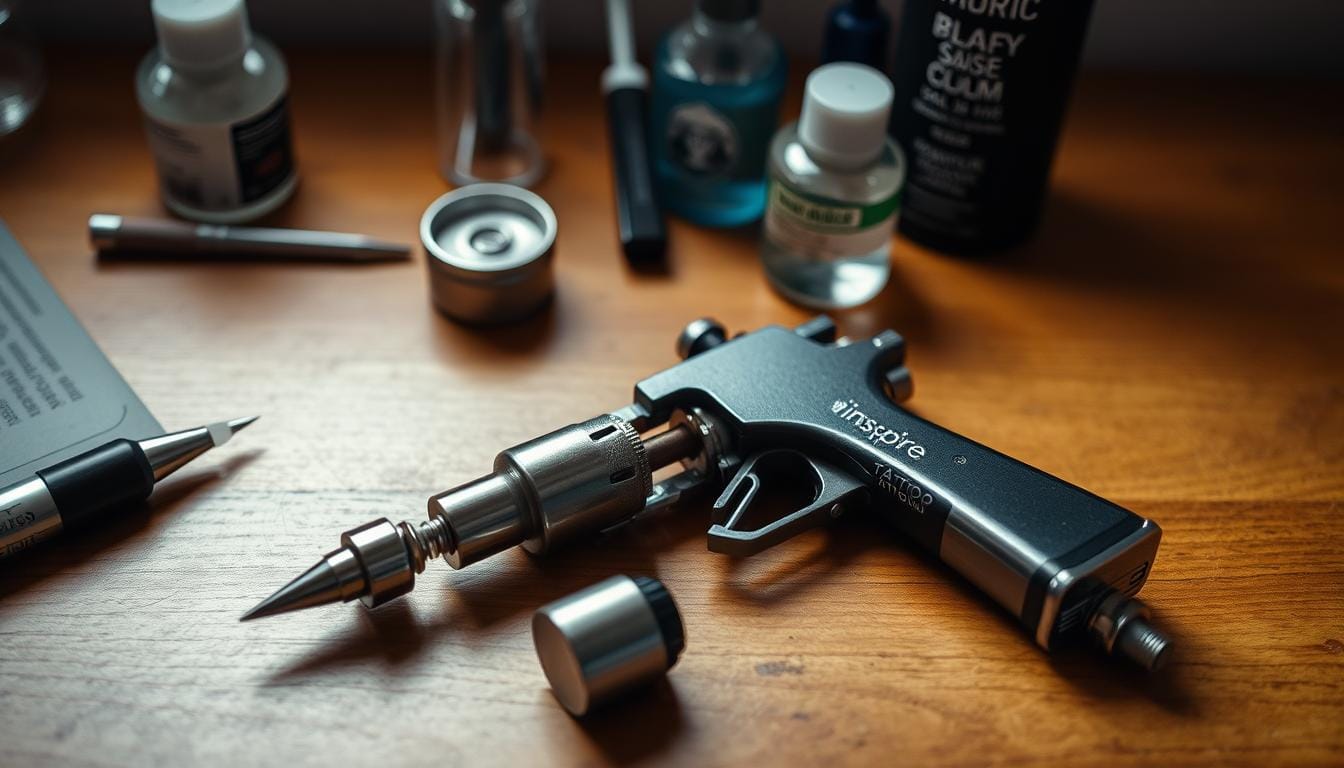Discover the Top Tattoo Gun for Beginner Artists
Starting as a tattoo artist is exciting and scary. Your first use tattoo gun for beginner is your partner in creating art. The wrong machine can slow you down, but the right one boosts your confidence.
This guide helps you find a tattoo gun for beginners that fits your style and budget. It’s all about simplicity and reliability.
Every artist wonders what makes a beginner-friendly tattoo gun special. The answer is simple: it’s easy to use and affordable. Machines like the Dragonhawk are great for beginners. They offer power and control without frustration.
This guide shows how to pick the right tool for your skills. It covers setup, maintenance, and avoiding common mistakes.
Whether you’re looking for tattoo machines for starters or an affordable tattoo gun for beginners, this guide has you covered. You’ll learn how to choose the best beginner tattoo gun that grows with you.
Key Takeaways
- Prioritize beginner-friendly tattoo guns with adjustable settings and lightweight designs.
- Compare best tattoo guns for beginners based on budget, durability, and ease of maintenance.
- Learn proper setup steps to ensure safety and precision from day one.
- Understand how affordable tattoo gun options can deliver professional-grade performance.
- Discover why investing in a quality machine now saves time and money long-term.
Understanding Tattoo Machines: Terminology and Basics
Choosing the right tattoo equipment starts with understanding the craft’s language. Let’s break down key terms and basics. This will help you start your journey.
Tattoo Gun vs. Tattoo Machine: What’s the Difference?
Many call it a tattoo gun, but pros say tattoo machine. The term “gun” is used in slang. But, tattoo machine manufacturers use terms like “motor” and “armature.” Even “tattoo gub” shows up sometimes—likely a typo. But, it’s best to use “machine” when talking with artists or suppliers.
Essential Components of a Tattoo Machine
- Frame: Holds all parts together, often made of metal or plastic.
- Coils/Motor: Powers needle movement in tattoo machines.
- Armature Bar: Connects the needle bar to the machine’s motor.
- Contact Points: Affect the machine’s click or vibration feel.
- Needle Tube: Guides the needles during use.
How Work Tattoo Gun for Beginner
A tattoo machine uses a tattoo motor to move needles up and down. Coils make electromagnetic pulses. This moves the armature bar to control needle depth and speed.
Adjusting tension and contact points lets you customize the machine. This way, you can meet different tattooing needs. This setup is the same in all tattooing machines from top tattoo machine manufacturers.
Types of Tattoo Gun for Beginners
Every artist starts with a machine that matches their style. Let’s explore the three main types to find the best fit for your needs.
Coil Tattoo Machines: Traditional Powerhouses
Coil machines are the classic choice for bold lines and deep shading. They need hands-on adjustment during coil tattoo machine setup. This might take time to master.
These machines create a distinctive buzzing sound. They are favored for traditional tattooing. They demand more maintenance but deliver precision once calibrated.
Rotary Tattoo Machines: Modern Versatility
Rotary machines use a motor for smooth, consistent needle movement. Their quiet operation and lighter weight make them a top pick for beginner tattoo machine users. Many entry-level tattoo gun models in this category come in kits designed for first-time artists.
They’re easier to control for fill work and smaller tattoos.
Pen-Style and Wireless Options: Convenience and Mobility
Pen-style tools and wireless tattoo machine designs prioritize portability. The tattoo pen format feels intuitive, similar to writing instruments. This makes them great for small details.
Wireless options eliminate cord clutter, ideal for on-the-go artists. These tattoo gun kit for beginners often include all needed tools in one package.
Each type offers unique benefits. Coil machines suit those ready for hands-on learning, while rotary tattoo machine options simplify entry into the craft. Wireless and pen styles lower barriers further with their user-friendly designs.
Researching beginner tattoo equipment reviews will help you select the best fit for your first projects.
What to Look for in a Tattoo Gun for Beginners
Choosing your first tattoo gun needs careful thought. Use this tattoo gun buying guide for beginners to pick the best tattoo gun for starters. Look for durability, comfort, and easy use to start right.
- Build Quality: Choose machines with stainless steel parts for lasting use and cleanliness.
- Weight & Ergonomics: Light, ergonomic designs help avoid hand pain during long tattoo sessions.
- Power Source: Plug-in machines give steady power; battery ones are great for moving around.
- Stroke Length: Adjustable stroke lengths let you try different tattoo styles, key for beginners.
- Price Range: Find a balance between cost and quality—$100–$300 is a good range for starter machines.
- Tattoo gun recommendations for beginners often suggest machines that are easy to keep up and have spare parts.
Read beginner tattoo machine reviews to see how the Dragonhawk V2 or Swave machines compare. Look for brands with warranties and good customer support. Make sure your professional tattoo gun for newbies meets safety standards. Also, choose machines with clear how to use tattoo gun guides. This way, you’ll get a machine that improves with you and fits your budget.
Top Recommended Tattoo Guns for Beginners
Choosing the right tattoo gun is important. It depends on your budget and goals. Look at these options to find the best one for you.
| Category | Price Range | Features | Best For |
|---|---|---|---|
| Budget-Friendly | $50-$100 | Basic functionality | Testing the craft |
| Mid-Range | $100-$250 | Adjustable coils, durable parts | Serious beginners |
| Premium | $250-$500 | High-quality motors, ergonomic design | Investing in quality |
Budget-Friendly Options
Begin with the $70 PowerMax Mini or TatMaster 2000. They are cheap but good for learning. Perfect for projects.
Mid-Range Professional Starter Machines
The EZ-Start Pro and InkMaster 3000 are good choices. They have adjustable coils and strong frames. Ideal for moving from practice to real tattoos.
Premium Beginner-Friendly Machines
Invest in the IronClad Pro or Viper V2 for better performance. They last longer and are worth it for those serious about getting better.
Dragonhawk Tattoo Gun for Beginner: A Popular Choice for Newcomers
Dragonhawk is known for their and easy-to-use . Their has everything you need. Sold by partners, they are great for needs.
“My first Dragonhawk machine lasted years. It’s perfect for learning without overspending.” – Maria, 3-year tattoo artist
Buy from Dragonhawk Official for ease. Their service is reliable and fast.
Complete Tattoo Machine Kits: What’s Included and What You Need
Choosing the right tattoo machine kit or tattoo setup kit makes starting easier. A beginner tattoo kit should have basic tools for safe practice. But, not all beginner tattooing equipment comes in one package.
Essential Components in a Quality Starter Kit
A beginner tattoo machine kit should have:
- Tattoo machine (or beginner tattoo kit with gun)
- Power supply and foot pedal
- Needles, grips, and tubes
- Practice skins and disposable gloves
- Basic cleaning tools
| Included in Most Kits | Need to Buy Separately |
|---|---|
| Machine and power supply | High-grade inks |
| Practice materials | Sterilization equipment |
| Maintenance tools | Aftercare products |
| Disposable items | Protective eyewear |
Additional Supplies to Purchase Separately
Even the best beginner-friendly tattoo kit misses some things like:
- Premium inks and pigments
- Autoclave or sterilization tablets
- Clients’ aftercare ointments
- Protective masks and aprons
Invest in good beginner tattoo supplies to avoid shortcuts. Focus on solid tattoo machine starter kit basics first. Then, add more later.
How to Set Up a Coil Tattoo Machine
Setting up your coil tattoo machine right is key. It makes sure your machine works well and safely. Here’s how to set it up right and keep your work precise.
- Mount the machine on a strong handle. Make sure the tube is tight to stop shakes.
- Put the needle bar in the machine. Make sure it’s right with the contact screw. Use the right rubber band tightness for steady power.
- Plug in the power, making sure the voltage is right for your machine.
Adjusting Your Tattoo Gun for Optimal Performance
Small changes can make a big difference. Here are some tips:
- Armature gap: Set it to 1/16th inch for smooth needle movement.
- Spring tension: Adjust springs to control needle speed and depth.
- Contact screw: Adjust to keep steady contact with the armature bar.
Troubleshooting Common Setup Issues
| Issue | Solution |
|---|---|
| Motor overheating | Reduce voltage or check coil alignment. |
| Needles skipping | Adjust rubber bands and check needle alignment. |
| Excessive vibration | Loosen springs and ensure secure mounting. |
Getting good at setting up your coil tattoo machine takes time. Regular checks help avoid damage and keep your lines clean. Always check your machine’s manual for specific tips on how to use a coil tattoo machine safely. Always test new settings on fake skin before tattooing real skin.
Using Your Tattoo Machine: Beginner Techniques
Learning to tattoo starts with the basics. Use an easy-to-use tattoo gun or easy-to-use tattoo gun for newbies. Hold the machine like a pen and keep your wrist relaxed. This helps avoid getting tired.
Start by practicing on fake skin. Use light pressure to control how deep the needle goes.
- Hand Positioning: Hold the machine at a 15-30° angle to the skin. Adjust as needed for your design.
- Easy-to-use tattoo machines need steady speed. Don’t rush. Let the machine’s motor guide you.
- For beginner tattoo artists, start with short strokes. Add shading by layering ink slowly.
- Stretch the skin tight but not too much. This prevents deep punctures.
“Practice on synthetic skin until your hand moves instinctively. This builds muscle memory for precision.” – Professional Tattoo Mentor
When using a beginner tattooing gun, coil machines need firmer skin contact. Rotary machines work well at lighter pressure. Use light, steady strokes for clean lines.
Start with simple shapes before moving to complex designs. Tips for beginner tattoo artists include:
- Test needle depth on paper before each session.
- Rotate the machine grip to avoid cramping.
- Pause often to clean ink buildup with a cotton swab.
Keep your pressure and speed consistent for even ink. Always clean your tools between practice. These habits will help you master your easy-to-use beginner tattoo machine.
Maintaining Your Tattoo Gun for Longevity
Keeping your tattoo machine in good shape is key. Even the best machines need regular care. This keeps them working well and saves money on repairs.
Cleaning and Sterilization Procedures
Take apart your machine after each use. Clean every part well. Use ultrasonic cleaners for deep cleaning and autoclaves for metal parts. Don’t soak the electronics. Check the care guide from your tattoo gun brand for details.
Regular Maintenance Schedule
- Daily: Clean the machine, check cables, and oil moving parts.
- Weekly: Look for wear on coils, springs, and needles. Tighten screws that are loose.
- Monthly: Use an ultrasonic cleaner for a deep clean. Check electrical connections.
When to Replace Parts
| Part | Signs of Wear | Action |
|---|---|---|
| Coils | Loose tension, rust, or broken wires | Replace immediately |
| Armature Bar | Cracks or pitting | Replace to avoid malfunction |
| Bearings | Stiff movement, excessive noise | Lubricate or replace |
When you build or modify a tattoo gun, use parts from trusted brands. Even the best machines need new parts every 6-12 months. Always check the guide for your model.
“Regular cleaning and part checks are the foundation of a long-lasting tattoo machine,” says Jane Doe, a certified tattoo technician with 10+ years of experience.
Spending time on maintenance is worth it. It keeps your tattoo machine working well and safe for clients.
Conclusion: Starting Your Tattooing Journey with the Right Equipment
Choosing the right starter equipment is key to your tattooing skills. A good beginner tattoo gun set or entry-level tattoo machine helps you learn right. It keeps you safe while you practice.
Look for starter kits that are easy on your wallet. They should have needles, grips, and tools to keep things clean. Brands like Dragonhawk make great beginner tattoo guns. They are precise and easy to use.
Your first machine is just the start. It’s a tool to help you learn. Choose a starter tattoo gun that fits your style. You might like traditional coil machines or rotary ones.
Learning to tattoo takes time. Start by mastering grip, pressure, and keeping things clean. Watch online tutorials, get an apprenticeship, or join workshops. These help you get better with your machine.
Keep your tools in good shape to make them last longer. As you get better, you’ll know when to get better machines. Remember, your skills are more important than your tools.
Start with a beginner tattoo machine that’s easy on your wallet. Stay dedicated to learning. Let your skills guide you when it’s time to upgrade. The right tools and hard work can make tattooing a fulfilling career.
FAQ
What is the best tattoo gun for beginners?
Beginners should look for tattoo guns that are easy to use and affordable. Brands like Dragonhawk are great for newbies. They offer quality and are easy to use.
How do I set up a coil tattoo machine?
To set up a coil tattoo machine, first assemble it. Then attach the needle and tube. Next, connect the power supply and adjust it for the best performance. Following detailed instructions is key.
Are rotary tattoo machines better for beginners?
Yes, rotary machines are great for beginners. They are versatile, quiet, and easy to maintain. They also have a simpler learning curve, making them perfect for newbies.
What should I look for in a tattoo machine kit for beginners?
Look for a kit with a good machine, power supply, foot pedal, needles, inks, and practice items. Make sure the kit is complete and has quality parts.
How can I maintain my tattoo gun for longevity?
Keep your tattoo gun clean and sterilized regularly. Check and replace worn parts. Follow a maintenance schedule to keep it working well.
What type of tattoo needles should beginners use?
Beginners should start with simple needles. Use round liner needles for outlines and shader needles for colors. Choose the right needle for your tattoo style.
How do I choose the right tattoo machine for my style?
Choose a machine based on your tattoo style, comfort, and weight. Try different machines to find the best one for you.
Can I use a wireless tattoo machine as a beginner?
Yes! Wireless tattoo machines are great for beginners. They are easy to use and offer freedom of movement.
What are common mistakes beginners make when tattooing?
Beginners often use the wrong needle angles or go too deep. They also apply uneven pressure. Practice on fake skins to avoid these mistakes.
How do I adjust the settings on my tattoo gun?
Adjust your tattoo gun by tweaking the armature bar gap, spring tension, and contact points. Knowing how these changes affect your work will help you improve.
